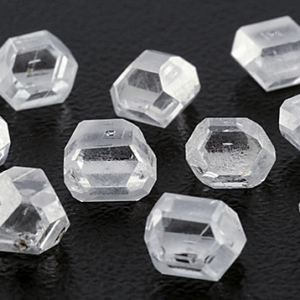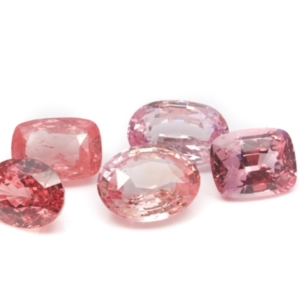Steatite stone – properties, virtues & benefits
Steatite stone, also known as soapstone, is a soft, easy-to-work material often used for carving and making utilitarian objects such as kitchen utensils. Discover the characteristics and uses of this natural stone in our article.
STEATITE CHARACTERISTICS
- Chakra: Crown (Sahasrara).
- Properties: Healing properties, ability to retain heat, acid resistance.
- Astrology: Venus.
- Zodiac: Libra, Taurus.
- Elements: Earth.
- Colors: White, cream, beige, gray, green.
- Hardness: 1-2 on the Mohs scale.
- Chemical Formula: Mg3(Si4O10)(OH)2.
- Associated god: /
PIERRE STÉATITE – HIS HISTORY
Steatite stone, also known as soapstone or saponite, is a mixture of several minerals. It takes its name from the Latin “steato”, meaning “fat”, and “ite”, meaning “mineral”, Pliny the Elder having so named it for its resemblance to animal fat during the 1st century AD. The first traces of its use date back to the Upper Paleolithic, which corresponds to the emergence of prehistoric art and more advanced tools. Steatite was also used in art, as illustrated by the Grimaldi Venus, carved from green steatite. Its use continued into the Mesolithic and especially the Neolithic, a period marked by sedentarization and the development of pottery, where numerous objects such as vases, seals, necklaces, figurines and statues have been discovered by archaeologists.
The use of steatite stone in antiquity was rather limited in Europe. In Greece, only a libation table has been found at Knossos. In the ancient Middle Eastern city of Mari, statues were carved in this stone, while the early Egyptians carved steatite stone in the shape of seals or scarabs. In India and China, soapstone was used both for ornamental purposes and to make tools and household items. In Africa, it was used for carving sculptures, notably in Zimbabwe. In northern Europe and America, steatite stone was used by Canadian Amerindians, Inuit and Scandinavians for functional, ornamental and religious purposes. The Scandinavians used the stone to shape molds used to cast metal objects such as spearheads, knives and blades, as they had discovered and utilized its heat-accumulating and heat-retaining property.
From the 1st century AD, steatite stone began to be used in Europe for shaPing hand-carved or turned vessels. This production developed on a large scale among the Viking and AlPine populations. AlPine production flourished during the Late Roman EmPire, from the 3rd to the 6th century A.D., rivalling even ceramics in the Alps and surrounding regions. However, from the Middle Ages onwards, its use was restricted to the production of stoves and pans in AlPine regions until the 20th century. Examples of these products are on display at the Valmaggia Ethnographic Museum in Cevio, Switzerland. Since the 20th century, steatite stone has been used mainly for decorative purposes, as it is soft and compact. However, other more specific uses are also made of this stone.
Steatite stone is a refractory material highly resistant to high temperatures and chemical attack, making it a popular choice for stove and fireplace construction. Because of its ability to store and diffuse heat, it is also used to make frying pans. However, its softness precludes its use as a building material. It is used as a filler in the composition of certain cosmetics, pharmaceuticals, papers, plastics, rubbers and paints. It has also been used in the design of acetylene lamp burners and electrical insulators, thanks to its insulating properties. It is also used in the composition of certain water heaters, such as steatite or hybrid water heaters, which protect the heater’s resistance and tank from water corrosion and limescale. The price of these water heaters is higher, but they are more advantageous than lower-priced conventional appliances in areas with hard water. However, the most impressive use of steatite stone is probably for the Christ the Redeemer statue in Rio de Janeiro, where it forms the visible layer.
.
STEATITE STONE – ITS ORIGIN AND COMPOSITION
Steatite stone is a rock composed of several minerals in varying proportions, mainly talc, but also amphibole, calcite, chlorite, mica, iron oxides, pyroxene, quartz and serpentine. This rock is an ultramafic, low in silica and high in iron oxide and magnesium oxide. It is also metamorphic, resulting from the transformation of sedimentary and magmatic rocks into a solid state under conditions of high pressure and temperature. The formation of steatite stone requires special conditions, which explains its rarity – it constitutes less than 1% of the minerals in the Alps. This transformation takes place in the mantle, the intermediate layer between the Earth’s crust and its central core. Steatite stones outcrop on the earth’s surface as a result of the tectonic plate movements that formed the Alps massif, and are also visible at the surface due to erosion.
Steatite stone can come in various forms, either solid blocky or schistose, the latter being highly layered and easily separable into thinner sheets. It can have different colors ranging from white to gray, through green to dark green. It has a slightly greasy, almost oily texture, which explains its etymology compared to animal fat. Steatite stone can easily be ground into talcum powder. It has unique physical characteristics, which explains its wide variety of uses. It is both resistant (used as a refractory material with a high melting point) and soft, with a hardness of 1 to 2 on the Mohs scale. It is easy to shape with simple tools, making it ideal for sculpting. Soapstone also has a high calorific capacity, making it ideal for lining stoves and fireplaces, capable of storing heat and releasing it over several hours. It also has low thermal and electrical conductivity, making it suitable for use as insulation.
The first soapstone mines were opened in Canada in 1871 in Quebec. Today, the biggest producers are Japan and the USA, but other countries such as Brazil, Canada, China, India, Germany, Austria, France, Great Britain, Italy, Madagascar, Norway, Portugal, Russia and Australia also produce this stone. Depending on their origin, the quantities and types of impurities vary, giving steatite stone different characteristics.

STONE STEATITE – VERTIES AND PROPERTIES
PSYCHOLOGICAL STATUS
Steatite stone is known to help overcome excessive fears and anxieties by promoting a softening of exaggerated defensive attitudes and improving sociability and communication. It has calming, positive, stabilizing and soothing properties for the individual and his or her environment. It is beneficial in facilitating the process of transformation from old habits to new, more appropriate ones. It helps people to rediscover their true identity, free from old fears, and stimulates the capacity for change by opening up new possibilities. Wearing steatite stone jewelry also helps to regain serenity in the face of the unexpected, and to step back from pervasive fears.
In addition, steatite stone has a calming effect on the mind that combats anger and negative reactions, strengthens family relationships, summons sPiritual forces, brings joy into a home and encourages passive individuals in a change of positive attitude towards life. It also accompanies creative initiatives and enables a deeper manifestation of the inner self. It can be combined with other stones for enhanced action.
STRATEGY ON THE PHYSICAL LEVEL
Steatite stone is a natural remedy recommended for skin problems such as irritated patches, itching and red spots. To benefit from its properties, simply apply it to the skin area to be treated. Steatite stone products are also effective for treating chronic skin problems or sunburn. In talcum powder form, it is useful for treating clammy hands. In addition, steatite stone is balancing and soothing on a digestive level.

STONE STEATITE – CLEAN AND RECHARGE
Steatite stone is a soft, porous natural material that requires special care to clean and recharge. Here’s how to proceed:
Cleaning:
- Use lukewarm water and mild soap to clean soapstone.
- Avoid the use of harsh chemicals or abrasive cleaners, which can damage the stone.
- Carefully dry the stone with a soft cloth.
Loading:
- Steatite stone can be recharged by placing it on a selenite or amethyst plate for several hours or overnight.
- You can also recharge it by placing it in sunlight or moonlight for several hours.
- Fumigation with sage, palo santo or incense can also help recharge the stone.
Make sure to clean and recharge your soapstone regularly to maintain its optimal properties and energy.
WHERE DOES THE NAME STEATITE COME FROM?
The name “steatite” comes from the Greek “steatos”, meaning “fat”, in reference to the stone’s soft, oily texture. Soapstone is also known as “soapstone” because of its soapy texture and its ability to be carved into utilitarian objects such as kitchen utensils. Steatite is mainly composed of talc, a soft mineral that is also used in the production of baby powders and cosmetics due to its softness and ability to absorb moisture.
WHICH CHAKRA DOES STERATITE ACT ON?
Steatite is associated with the crown chakra, also known as Sahasrara. This chakra is located at the top of the head and is considered the center of sPiritual awareness and wisdom. Soapstone is often used in meditation to help open and activate this chakra, promoting greater sPiritual awareness and deeper self-understanding. By wearing or using soapstone objects, it’s possible to stimulate the crown chakra and foster inner peace and sPiritual connection.
WHICH ASTROLOGICAL SIGN IS ASSOCIATED WITH STEATITE?
Steatite is associated with the zodiac signs Libra and Taurus. People born under these signs can benefit from soapstone’s soothing, stabilizing energy by wearing or using soapstone objects. Librans may find that steatite helps them find emotional and mental balance, while Taureans can benefit from its earthy, stabilizing energy to help them stay grounded and centered.
STEATITE STONE SUMMARY
It should be stressed that astrology is an unscientifically proven practice, and associations between astrological signs and precious or semi-precious stones may vary according to source. Therefore, it is important not to take these associations as established facts.
As far as soapstone is concerned, it’s a natural stone that’s often used in sculpture and art. It’s also known as soapstone because of its soft, smooth texture. Some believe that soapstone may have soothing and stabilizing properties, although this has not been scientifically proven.
If you are interested in the properties of soapstone, it is important to seek information from reliable sources and consult a health professional or theraPist for any health concerns.

